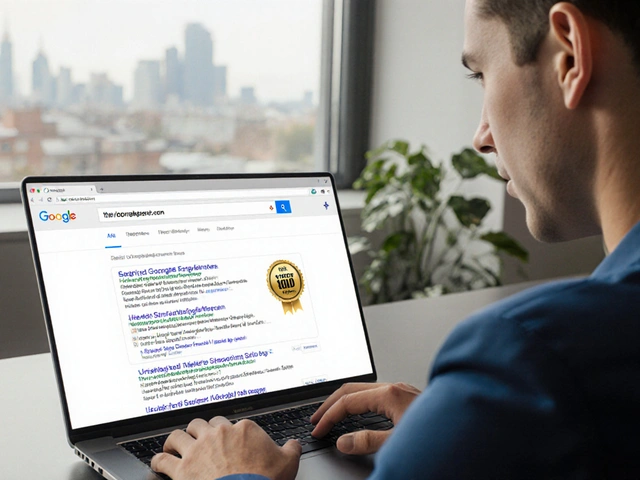Ever hear stories of people making money in their sleep and wondered if it’s just hype? That’s affiliate marketing for you—no wild promises, just a smart way to earn online by recommending stuff you believe in. You don’t need to be a celebrity or have a huge following either. If you’ve got a blog, a YouTube channel, or even a TikTok account, you’ve already got what it takes to play the game.
Here’s the cool part: you don’t create or store products, deal with boring customer support, or mess with shipping. Instead, you’re like a digital matchmaker between buyers and brands. Share a special link, and if someone buys, you pocket a cut—simple as that. The barrier to entry is pretty much zero; some people even start with just their phone and a social media account.
The easiest way to get your feet wet? Sign up for an affiliate program through companies you already use or trust. Amazon Associates, for example, lets you share links to nearly anything sold on Amazon. Even major brands like Adidas and tech companies offer their own deals. With the right approach, it’s not just about tossing random links everywhere—it’s about matching the right product to the right crowd.
- What is Affiliate Marketing, Really?
- How Do You Start (Without Getting Overwhelmed)?
- Smart Moves: Tips That Actually Work
- Scaling Up: Turning Pocket Change into Serious Cash
What is Affiliate Marketing, Really?
At its core, affiliate marketing is a straightforward concept. You work with a company by promoting their products or services, usually online, and earn a commission for every sale or lead you help make happen. There’s no need to invent, stock, or ship anything yourself. It’s all about connecting your audience to the stuff they’re actually interested in.
The whole model runs on something called an affiliate link. This special URL is unique to you, so whenever someone clicks your link and buys (or sometimes just signs up), the company knows you sent them and gives you credit. Your job? Share those links in ways that fit naturally into your content—think product reviews, how-to guides, or even just social media posts.
The affiliate marketing industry has exploded over the last decade. According to Statista, businesses spent more than $13 billion on affiliate marketing worldwide in 2024. That’s not a typo—brands see real value in letting regular folks help get the word out about their stuff.
| Year | Global Affiliate Marketing Spend |
|---|---|
| 2021 | $9.1 billion |
| 2022 | $11.3 billion |
| 2023 | $12.6 billion |
| 2024 | $13.2 billion |
Most programs pay you with a percentage cut of each sale, which can range from a modest 2% (think Amazon) up to 50% or even more on digital products. Some even pay per lead or click, not just per sale. Payouts and rules are spelled out clearly before you join.
- You don’t need to be an expert marketer; anyone with dedication can get results.
- It’s flexible—work from anywhere, set your own pace.
- You can partner with brands in literally any niche, from fashion to finance to fitness.
One thing to know: honesty matters. People can spot a fake recommendation a mile away. The most successful affiliates actually use or research the things they’re promoting and aim to help their readers, not just sell to them. That builds trust, and trust means more clicks—and more earnings—in the long run.
How Do You Start (Without Getting Overwhelmed)?
Getting into affiliate marketing can feel like standing at the edge of a pool and not knowing how cold the water is. The good news? You don’t need to learn everything all at once. Here’s how to actually get moving without your head spinning.
First, pick a topic or niche you care about. Maybe you love fitness gear, smart tech, or home cooking stuff. If it’s something you enjoy, turning it into content feels less like a chore. People can tell when you’re genuine, which pays off when you start recommending things.
Ready to get practical? Follow these steps:
- Pick a Platform: Start on whatever’s easiest. Got a blog? Use that. Love TikTok? Use short videos. Don’t wait for the “perfect” platform, just start with the one you already use the most.
- Sign up for a Reliable Affiliate Program: Amazon Associates is beginner-friendly, but tons of brands—from Nike to Bluehost—have their own in-house deals. Look for programs that pay decent commissions (some pay as low as 1%, others go up to 50%).
- Make Content with a Purpose: Don’t just share a link for the sake of it. Show how you use the product, review it, or explain how it’s actually helped you. Real stories connect more than mindless promotion.
- Track Visits and Clicks: Most affiliate platforms offer easy tracking tools. This helps you see what people actually click on, so you know what content works (and what flops).
Here’s why people love starting with affiliate marketing:
- You don’t need upfront cash—many platforms are totally free.
- No special degrees or fancy certificates needed.
- You get to learn digital marketing skills on the job, at your own pace.
Check out this quick stats table to get a feel for real-world numbers:
| Fact | Number |
|---|---|
| Average affiliate commission rate (across industries) | 5%–20% |
| Top affiliate marketers (monthly income) | $7,000–$50,000+ |
| Average beginner affiliate’s first 3 months earnings | $0–$150 |
| Most popular platform for beginners | Blog or YouTube |
One last thing: search engines love useful advice and honest reviews. Focus on helping people, and you’ll build trust (and clicks) way faster than trying to sell hard. The secret to winning at affiliate marketing is starting simple, tracking what works, and keeping it real.

Smart Moves: Tips That Actually Work
Let’s get straight to the point. Most people fail at affiliate marketing because they treat it like a lottery ticket, just throwing out random links and hoping for a lucky hit. If you want to earn more than pocket change, you have to play it smart. Here’s how.
- Pick Early Winners: Don’t chase every program out there. Focus on products you genuinely use or can easily research. Platforms like Amazon Associates are friendly for beginners, but niche programs can pay way better. For example, software and tech products often give higher commissions than physical goods.
- Give Real Opinions: No one wants fake reviews or robotic praise. Share honest experiences. If it’s a skincare product, show your real results. If it’s a course, talk about what you actually learned.
- Learn SEO Basics: Even knowing a bit about keywords makes a difference. Google rewards content that answers real questions. Tools like Ubersuggest or Ahrefs can help you sniff out phrases people are searching for. If you write about fitness watches, use terms your audience would search, like “best fitness tracker for runners.”
- Don’t Spam—Solve: It’s tempting to plaster links everywhere, but that just looks desperate and gets ignored. Instead, focus on solving actual problems. Example: If you write about camping, share a full packing list and recommend gear you’d trust yourself.
- Use Multiple Formats: People learn in all kinds of ways. Mix it up—write a blog post, record a quick Instagram Reel, or share a step-by-step tutorial on YouTube. More formats mean more eyeballs (and more clicks).
- Track What Works: No more guessing. Almost all affiliate programs give you dashboards showing clicks and sales. Monitor what's getting results and double down there. Cut what doesn’t work so you don’t waste your energy.
Even the pros mess up sometimes, but the key is to test new approaches and learn from mistakes. Stay curious, adapt fast, and you’ll be way ahead of anyone just dumping random links online.
Scaling Up: Turning Pocket Change into Serious Cash
Getting your first affiliate commission feels great, but what if you want more than spare change? This is where things get serious. You need a real plan if you're hoping to move from a few bucks a month to hundreds—or even thousands.
First off, treat affiliate marketing like a business. It’s not about throwing up random links and crossing your fingers. People who see real growth always know their audience and handpick products that actually fit. You’ll want to analyze which links are converting, which content is driving traffic, and then double down on what works.
Most top affiliate earners create a system for growing their results. Here’s what helps:
- Build an Email List: Email is gold. You own it, unlike social followers. Collect emails with freebies like ebooks, checklists, or even a quick quiz. Then you can share personalized recommendations to people who already trust you.
- Content That Ranks: SEO helps people find your blog or site long after you publish something. Choose keywords people search for, answer actual questions, and link to your affiliate products naturally. The more traffic you get, the higher your earning potential.
- Choose Higher-Paying Programs: Not all affiliate programs pay the same. For example, software and digital products often come with commissions of 20-50%, while some physical products pay under 5%. Don’t be afraid to promote premium offers if they genuinely help your audience.
- Use Multiple Channels: Don’t just stick to a blog. Post short videos on YouTube or TikTok, answer questions on Reddit or Quora, or start a podcast. Different places mean more eyeballs on your links.
Let’s look at some real numbers for perspective. According to the Influencer Marketing Hub’s 2024 survey, here’s what typical monthly affiliate earnings look like:
| Experience Level | Monthly Earnings |
|---|---|
| Beginner (0-6 months) | $0 - $500 |
| Intermediate (6-24 months) | $500 - $2,500 |
| Advanced (2+ years) | $2,500 - $10,000+ |
The jump from beginner to advanced doesn’t come from luck—it comes from working smarter. Regularly test what’s working, sharpen your writing or video skills, and always look at your data. If you notice one product taking off, think about creating a whole resource or in-depth guide around it. That’s how you dig those gold nuggets up and keep the cash flowing in.





